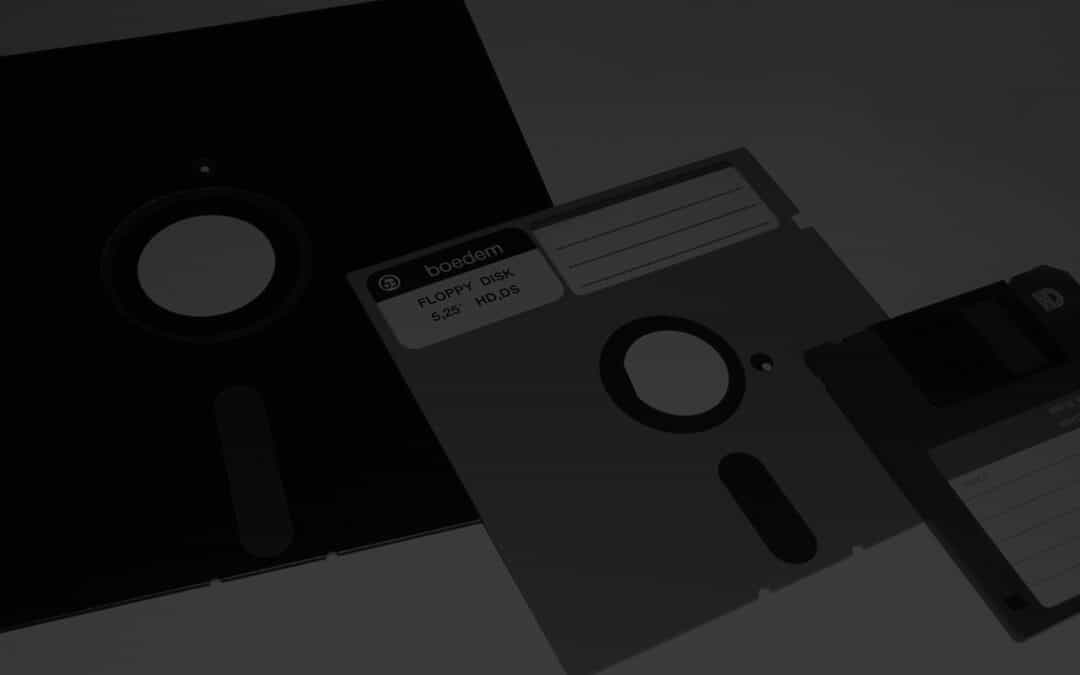Small banks and credit unions have small teams, and in an American Banker article entitled, One-Person Bank Marketing Teams Are Destined to Fail, Kevin Tynan asked the following question:
“How can one staffer be held responsible for all marketing and social media campaigns, developing marketing strategies, maintaining websites, creating advertisements, handling public relations and managing new product launches?”
The short answer is, with software.
We’ve seen this scenario play out across many different industries and roles, when it becomes necessary to do more with less. The popular television show, Mad Men, prided itself on depicting a historically accurate 1960s America, and every mid-level manager on that show had their own executive assistant.
Yet today, software from companies like Microsoft and Google have made it a lot easier for a modern manager to organize their own calendars, eliminating the need for additional headcount.
Software is eating the world and here is how it is helping community banks and credit unions with small marketing budgets.
One-Person Marketing Team Strategy
Developing a strategy is a big deal and it usually involves a bunch of people getting in a room together to hash things out. Software isn’t going to be able to eliminate the need for this process, so don’t try to skimp on time here.
That being said, big strategy sessions don’t happen frequently. So let’s plan for the annual budgeting and strategy session and agree that this is something that a one person marketing team can handle on their own.
Everyone gets together across departments and decides on a direction and from that point forward the marketer has to come up with a plan to build campaigns that support the strategic direction, monitor spend and review results.
This is where software starts to shine.
Let’s Start With Data
We’re starting with data because when talking about skilled marketing professionals, Kevin identifies a big need for marketers in every industry:
“Interpretation of market and competitive data, analysis of customer transactions and an ability to succinctly articulate a path forward can make a critical difference for many community banks.”
I hear time and again how difficult it is for marketers at financial institutions to access their account holder data. Things move insanely slow when marketers have to ask for data and here’s why:
First, the marketer has to come up with a hypothesis, meaning the marketer has to think that a certain segment of account holders share some kind of quality that makes them candidates for a specific offer.
Once the hypothesis has been thought through, a request for data needs to be submitted, immediately followed by a waiting period to get the data back. My understanding is that wait times for data can take anywhere from a couple days to a couple weeks because these types of requests are just not a priority with myriad projects going on in IT.
But here’s the kicker, when the data comes back it is highly likely that it won’t be helpful.
And that is totally normal. When we, as marketers, submit an initial request for data, we don’t know what we don’t know. We are coming up with a hypothesis and guessing about a lot of different things. Assumptions are made and those assumptions are frequently wrong.
This has nothing to do with incompetence.
As an example, think of the last time you wanted to ask Google a question and didn’t quite know how to get the answer you wanted. It happens, right? You get better and typing search terms in that little box everytime results come back. Now imagine how horrible all our lives would be if Google took three days to three weeks to return your search results, instead of .0003 seconds.
That would be beyond painful… it would be excruciating.
What’s worse is that even if you nailed your data request on your first attempt, you likely now have some follow up questions that require an additional data request and another waiting period.
This is a big part of why it seems that marketing can’t be done with a team of one. The waiting time for data is a silent killer that nobody talks about.
Waiting for data makes it seem like an extra person is needed in the marketing department because someone needs to focus solely on the process of gathering data and managing that timeline, otherwise campaigns just won’t ever get done.
Marketing departments don’t have the time to wait for data, so we hire more people.
Data At Your Fingertips
Big data is a buzzword, and you probably shouldn’t ever say it… because accessible data is what’s important and immediately impactful. Especially to a marketing department army of one.
Let’s do a quick thought experiment. What if today’s bank marketer didn’t have to wait days, or even weeks, for data?
Imagine that this hypothetical marketer could submit an unlimited number of data requests to analyse and interpret account holder behavior on their own timeline. Don’t stop there, though. While we’re imagining, let’s say this marketer can receive results back from their data requests instantly.
How long would it take to put a bank marketing strategy and tactical plan together if this was the norm? How many people would be needed to assist in the process?
Would it be reasonable to assume that this same, imaginary marketer could draft a rock solid marketing strategy over the course of a couple days instead of a couple weeks, if they had instant access to their financial institution’s data?
Now imagine what that kind of time savings could do to efficiency and productivity.

But What About Day To Day Business?
Glad you asked. Software can be helpful on this front too. I think we can agree that the hard part is getting to the data. Seriously. Once that problem is solved, it’s all about execution and there is already a lot of software to help today’s lone marketer on this front.
Let’s review:
Campaigns, New Product Launches & Onboarding
Building audiences for campaigns should be the most labor intensive part of this task, and we just talked through how that can optimized with software. After the research legwork is done, emails, print mail, SMS text messages or even outbound phone calls can be sent out easily with marketing automation, production and fulfillment software like Core iQ.
Imagine being able to generate ten campaigns in ten minutes. Software that gives marketers access to their data while also making it easy and fast to push out campaigns and onboard new accounts can actually eliminate the need for additional headcount in the marketing department.
Social Media Campaigns and Advertisements
There have been a number of advancements in the software that helps marketers build social media campaigns and ads. Tools like Buffer and Hootsuite allow you to schedule social media posts and optimize them for engagement. While online software like Adroll allows you to manage ads across many different social platforms, as well as establish and manage retargeting ads that let you advertise to people who have visited the website.
These tools allow today’s marketer to post content and perform all of their social media campaigns in one place, drastically reducing the amount of time it takes to build and manage them.
Maintaining the Website
If an agency is managing the maintenance of your financial institution’s website, then you’re likely dealing directly with someone at the agency. If your website was built on top of a Content Management System (CMS), like WordPress or Banno, then you’re able to use software to make those same changes at a fraction of the cost and a lot faster.
Public Relations & Events
That just leaves traditional PR and online tools like Cision for media relations and Eventbrite for scheduling and managing events.
But Is It All Affordable?
Yes. Sophisticated marketing software does not have to cost an arm and a leg these days. Here’s Kevin on marketing budgets:
“The same Cornerstone data shows that the median bank allocation for marketing expenses is 0.07% of assets. Not only is $290,000 inadequate for any type of sophisticated program, but it is less than the standard benchmark of .1% of assets used by marketers 40 years ago.”
Let’s do the math. A financial institution with $70 million dollars in assets would have $49,000 per year, or just over $4,000 a month, to spend on marketing if their marketing budget is .07% of assets. This is still a significant amount of money given how affordable software has become.
If a quarter of that $4,000 per month budget, or $1,000 per month, goes toward software, that leaves $3,000 per month to fund outsourcing collateral design and content creation, buying ads and paying for print collateral and funding events and giveaways.
So now that we know it’s affordable for the marketing department of one to buy and use software, how do we know that it works?
Great question. The other thing that software can do really well is track conversions. Think about a bank marketer being able to rapidly test and iterate a hypothesis by sending emails to cohorts of 100 people while tracking conversions.
How much better would every marketer’s campaigns be with that kind of insight and the ability to test campaigns inexpensively?
With the right software, total campaign costs can actually be brought way down and conversions can go way up, compared to tried and true blanket marketing campaigns.
What We Believe
A bank marketer’s success or failure should depend on their individual resourcefulness, not the number or amount of resources they have available in the marketing department.
Software levels the playing field for one peron marketing shops.


